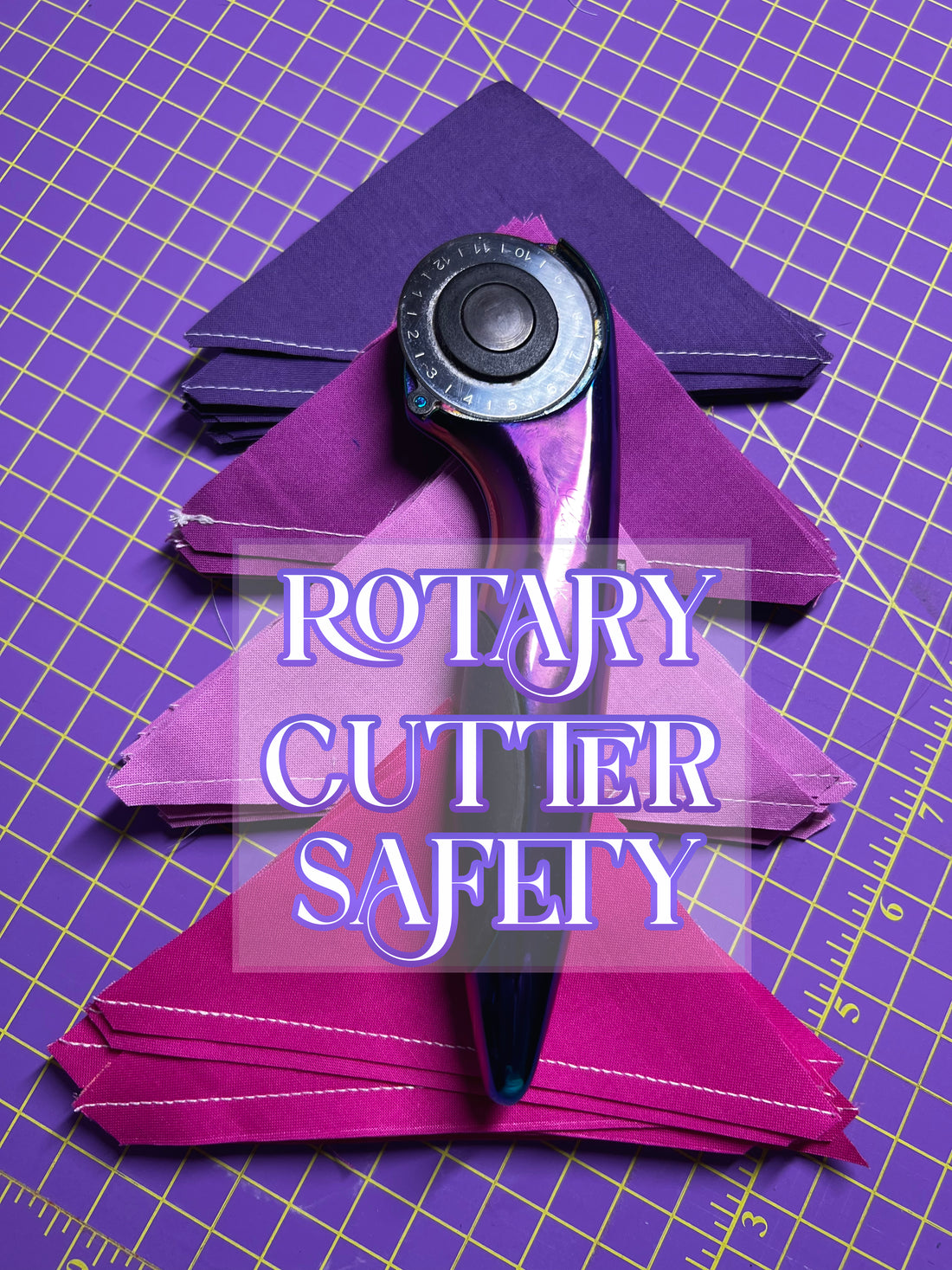
Rotary Cutter Safety Tips
Emily HerbsterShare

Every time I open my Facebook app, I'm always greeted with fun quilting posts from the groups I'm in. However, I've noticed a common theme that I wanted to address. Rotary cutter injuries! This tool is something we use often and we tend to overlook how dangerous they can be.
I'm always seeing posts about people accidentally cutting their fingers with their rotary cutters and needing an ER trip. I never thought I would find myself in that scenario until it was too late. I was rushing late at night squaring up some HST's and that's when I sliced the corner of my finger pretty good. I'll spare the details but I luckily didn't need an ER trip or stitches however, it could've easily been so much worse.
Here are some quick and easy tips so you can make sure you're staying safe and keeping all of your fingers in tact while cutting fabric!
1. Always, always close your blade when you are setting your rotary cutter down. Some rotary cutters will have a trigger you need to pull to expose the blade and when you let go it will automatically close and put the guard up. My current rotary blade doesn't have that and I need to manually close it each time.
Here's why: I've accidentally pushed my rotary cutter off my table more times than I can count because it's buried under patterns or fabric and I don't realize it's there. If your rotary blade falls while it's open you could end up injuring yourself or possibly a pet if they happen to be in the right place at the right time. Sure, it's annoying closing it each time you set it down but it's worth those 5 extra seconds to make sure your cutting table area remains safe. 
2. Change your blades often! You will most likely know when your blade needs changed. The moment you feel like you need to put more pressure on your rotary blade because it's just not cutting though your fabric layers, change it! Blades are relatively inexpensive. I actually order a knock off brand from amazon and they work great and I have no hesitation about cost and changing them out frequently.
Here's why: If you continue cutting with a dull rotary blade, you will need to put more pressure down. Number one, that's not great for your wrist especially if you're doing a lot of cutting/trimming. Secondly, I notice that when I tend to put more pressure down that my ruler tends to shift more often. 
3. Purchase a ruler grip. I use a gypsy gripper that I purchased off of Amazon but you can find something similar at Harbor Freight if you have one close to you.
Here's why: Using a ruler grip/handle will help apply even pressure to your ruler. The main reason why I love it is because it keeps your fingers away from the edge of the ruler where your rotary blade will come in close contact with.

4. Sticky tape! I've been experimenting with some options and so far I've tried painters tape, 3M transparent surgical tape, and Glitter Grippers. Using one of these options will help keep your ruler in place.
Your standard painters tape is a great thing to use if you already have it on hand. It does loose it's sticky factor quickly so you have to replace the piece of tape on your ruler pretty often. The 3M tape I think is the best hack for this. It has the perfect amount of sticky texture to keep your ruler in place. The glitter grippers most definitely have the cuteness factor and are a great option but is the most expensive option out of all three. I think overall the 3M tape is the best performing option for the price & quantity. 
5. Don't rush! This is probably the most common theme I've heard around any injury. You're in a situation where you're rushing or maybe not solely focused on the task at hand and that is where mistakes happen. Quilting is not a quick process. Take the time to slow down and enjoy each part of creating. I know that trimming and cutting fabric is not always the most exciting part but it's probably the most dangerous part of the process because the rotary blades are so sharp. Make sure to stay focused and maybe you will come to like this step a little more.
6. Hand positioning is really important. When you look at your ruler, you know exactly where you're going to run your blade. Don't tempt fate by putting your fingers in the way! I use a bear claw sometimes and find that when I'm taking my time and making each cut purposefully, the bear grip gives me enough of a sturdy grip that my ruler doesn't shift.
